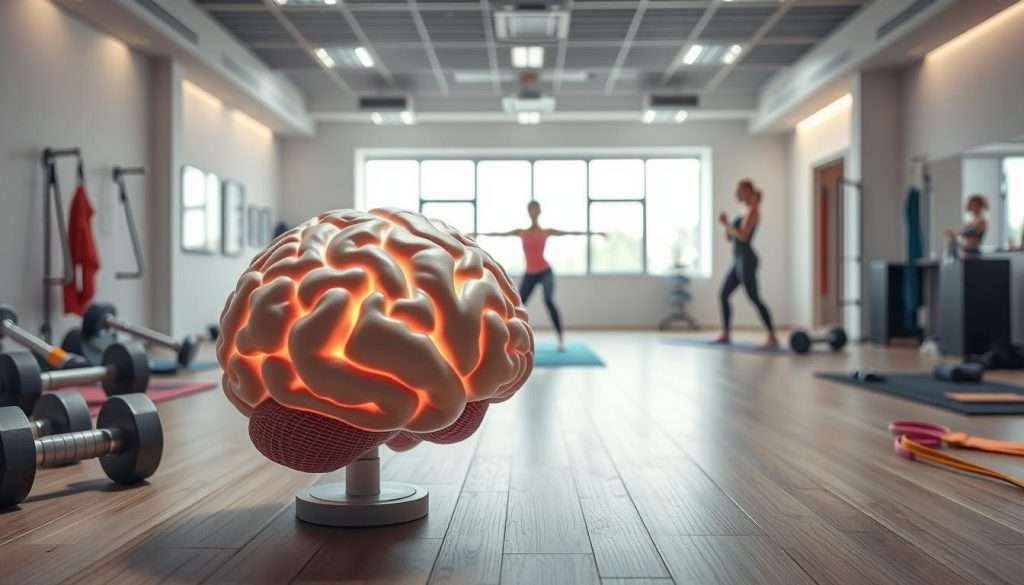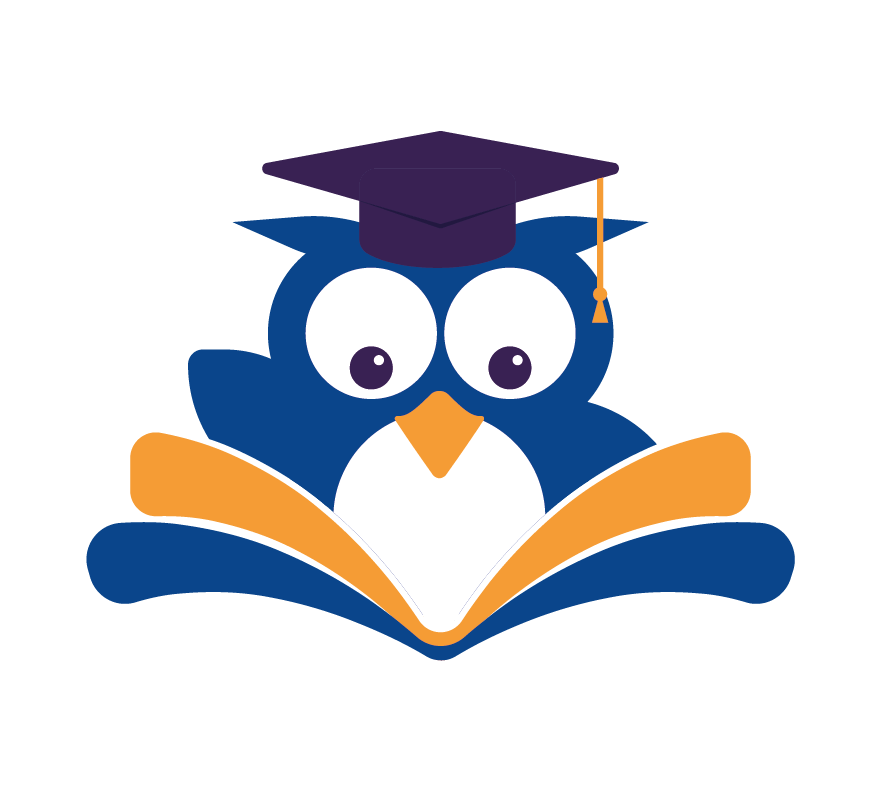Are you tired of feeling overwhelmed by study material? Learning should be an exciting adventure, not a chore! We think the right techniques can make studying fun and effective.
Imagine learning like a sponge and remembering things easily. It’s not just a dream! With accelerated learning techniques and cognitive learning strategies, you can learn faster and reach your goals sooner.
Key Takeaways
- Discover how to make learning an enjoyable experience
- Unlock the secrets of accelerated learning techniques
- Improve your memory and recall with cognitive learning strategies
- Boost your productivity and achieve your goals faster
- Transform your study sessions into a fun and engaging experience
The Science Behind Accelerated Learning
Unlocking the secrets of accelerated learning starts with understanding how our brains process new information. Jim Kwik, a renowned learning expert, says it’s key to know how our brain absorbs and retains information for effective learning.
How Your Brain Processes New Information
Our brains process information through complex neural networks. When we learn something new, it creates new connections between neurons, known as synapses.
The Neurological Basis of Learning
The brain’s ability to reorganize itself in response to new experiences is known as brain plasticity. This concept is key to understanding how we can improve our learning capabilities.
Brain Plasticity and Learning Potential
Brain plasticity lets us adapt and change throughout our lives. By using this ability, we can boost our learning potential and keep information better.
| Learning Aspect | Description | Benefit |
|---|---|---|
| Neurons and Synapses | Building blocks and connections in the brain | Improved memory and learning |
| Brain Plasticity | Brain’s ability to reorganize itself | Enhanced learning potential |
Understanding Your Learning Style
Your learning style is unique, and finding it can boost your learning. We all learn in different ways. Knowing your style helps you study better.
Visual, Auditory, and Kinesthetic Learning
Most people have a main learning style: visual, auditory, or kinesthetic. Visual learners do best with pictures and diagrams. Auditory learners learn from sounds and music. Kinesthetic learners like to do things hands-on.
Identifying Your Dominant Learning Style
Think about how you’ve learned in the past. Do you remember things better with pictures or when you hear them? Or do you learn by doing? You can also take online quizzes to find out your style.
Adapting Techniques to Your Personal Style
After finding your style, adjust your study ways. Visual learners might like diagrams and mind maps. Auditory learners could enjoy podcasts or audiobooks. Kinesthetic learners might prefer doing exercises or acting out scenarios.
Customizing Study Methods for Maximum Retention
| Learning Style | Study Techniques |
|---|---|
| Visual | Mind maps, diagrams, watching videos |
| Auditory | Listening to podcasts, audiobooks, discussing topics |
| Kinesthetic | Practical exercises, role-playing, hands-on activities |
By matching your study methods to your learning style, you can learn more efficiently and remember better.
The Power of Spaced Repetition
The human brain tends to forget things. But, spaced repetition can help fight this. It involves reviewing material at longer intervals to boost retention and recall.
The Forgetting Curve Explained
Hermann Ebbinghaus first discovered the forgetting curve. It shows how our memory fades over time. Spaced repetition interrupts this curve, helping to keep memories strong at the right times.
Implementing Effective Spaced Repetition Systems
To use spaced repetition well, review material at the right times. You can use flashcards or digital tools for this.
Optimal Intervals for Different Types of Content
The best intervals vary by content type. Simple facts need shorter intervals, while complex ideas need longer ones.
Digital Tools for Spaced Learning
Digital tools like Anki and Quizlet make spaced learning easy. They adjust repetition intervals based on how well you do.
Adding spaced repetition to your study routine can greatly improve memory. It helps accelerate skill acquisition. This method, along with brain training methods, enhances learning and memory.
Chunking: Breaking Down Complex Information
When we face a lot of information, our brains can get too full. But, there’s a simple trick to help: chunking. It breaks down big info into smaller bits. This makes learning easier and helps us remember better.
The Cognitive Benefits of Chunking
Chunking helps by organizing info into groups. It uses our brain’s love for patterns. This makes learning faster, memory better, and problem-solving easier.
How to Chunk Different Types of Information
Chunking works differently for different info. For example, in learning a new language, group words by theme. In math, break down big formulas into simpler parts.
Subject-Specific Chunking Strategies
- For history: Organize events by time or theme.
- For science: Group related ideas or formulas.
- For literature: Break down by character, plot, or theme.
Practical Chunking Exercises
Try breaking down a tough topic into smaller parts. Use a table to organize these chunks. See how they connect.
| Chunk | Description | Related Concepts |
|---|---|---|
| Concept 1 | Brief description | Related ideas or formulas |
| Concept 2 | Brief description | Related ideas or formulas |
Psychological Hacks to Learn Faster
Discover how to learn faster with psychological hacks. These methods can greatly improve your learning speed and memory. We’ll look at several techniques to help you learn more efficiently.
The Pomodoro Technique for Focused Learning
The Pomodoro Technique helps you stay focused. It involves working in 25-minute blocks, followed by a 5-minute break. After four blocks, take a 15-30 minute break.
Customizing Time Blocks for Your Attention Span
Adjust the Pomodoro Technique to fit your focus. Try different work-to-break ratios to see what works for you.
Start with the 25:5 ratio and adjust as needed. Aim for a state of flow, where you’re fully engaged.
State-Dependent Learning
State-dependent learning means you learn better when in the same state as when you first learned it. This could be the same location, mood, or even substances.
While exact conditions are hard to replicate, a consistent study environment helps. Always study in the same place or at the same desk.
The Feynman Technique for Deep Understanding
The Feynman Technique breaks down complex information into simple parts. It involves teaching the concept to someone as if they’re a beginner.
Step-by-Step Implementation Guide
- Choose a concept you want to learn.
- Explain it in simple terms, as if teaching it to a child.
- Identify any gaps in your explanation and review the material.
- Simplify your explanation further and repeat the process.
By following these steps, you can understand complex topics better and retain the information more effectively.
Using these psychological hacks can greatly improve your learning. Try different techniques to find what works best for you.
| Technique | Description | Benefits |
|---|---|---|
| Pomodoro Technique | Work in focused intervals with regular breaks | Improved focus, reduced burnout |
| State-Dependent Learning | Learn in a consistent environment | Better recall, improved retention |
| Feynman Technique | Teach concepts in simple terms | Deeper understanding, improved retention |
Memory Palace: Spatial Learning Strategies
The memory palace, or method of loci, is an ancient technique that’s still very effective. It uses your spatial memory to store and recall information. By linking what you want to remember to places you know well, you can remember more easily.
Building Your First Memory Palace
Start with a place you know well, like your home or school. Pick a place you can easily imagine in your mind. Then, divide it into clear areas or stations.
Selecting Effective Locations and Routes
Choose a route that you can follow easily. For example, use your home, starting at the front door and moving room by room. Make sure the route is logical and easy to picture.
| Location | Associated Information | Memory Cue |
|---|---|---|
| Front Door | Main Topic or Keyword | Visualize a prominent object |
| Living Room | Subtopics or Related Concepts | Associate with furniture or decor |
| Kitchen | Details or Examples | Link to kitchen items or actions |
Using Spatial Memory for Different Subjects
The memory palace works for many subjects, from history to science. Just link the information to vivid images and places in your memory palace.

Advanced Memory Palace Techniques
When you get better, mix the memory palace with other memory tools. This can include acronyms or rhymes to make the info stick better.
Combining with Other Mnemonic Devices
For example, use the memory palace for main info and acronyms for details. This layered method can really improve your memory.
Mindfulness and Learning Efficiency
Mindfulness greatly improves learning. It helps you focus, remember better, and handle stress. These are key for learning well.
How Stress Impairs Learning Capacity
Stress makes learning hard. It activates your body’s stress response, releasing hormones that hurt memory and thinking. Dr. Lisa Feldman Barrett says, “Stress doesn’t just make you anxious. It also makes you less able to learn and remember.”
Mindfulness Practices for Better Focus
Mindfulness helps reduce stress and boosts focus. Activities like meditation and deep breathing calm your mind. This lets you study better. “Mindfulness is not just a practice, it’s a way of being that can transform your learning experience.”
Quick Mindfulness Exercises Between Study Sessions
Here are quick exercises for between study times:
- Take 5 deep breaths, focusing on the sensation of the breath.
- Practice a quick body scan, releasing any tension.
- Take a short walk, paying attention to your surroundings.
These exercises keep you focused and refreshed.
Integrating Mindfulness into Daily Study Routines
To add mindfulness to your study routine, start small. Start with short exercises and grow them as you get used to them. Being consistent is crucial to see mindfulness’s benefits in your learning.
The Role of Physical Health in Cognitive Performance
To supercharge your learning, it’s key to focus on physical health. Your physical health is the base of your brain’s power.
Sleep Optimization for Memory Consolidation
Sleep is key for memory to stick. It turns short-term memories into long-term ones. Your brain replays and processes what you learned during the day, making connections stronger.
Ideal Sleep Patterns for Students
Most adults need 7-9 hours of sleep each night. A regular sleep schedule and a good sleep environment can boost your sleep quality.
Nutrition for Brain Health and Learning
Eating well is vital for brain health. Foods rich in omega-3 fatty acids, antioxidants, and complex carbohydrates are great. Salmon, blueberries, and whole grains are especially good.
Exercise and Cognitive Function Enhancement
Exercise is good for your heart and brain. It boosts blood flow to the brain, helping with thinking and learning.
Best Types of Exercise for Mental Performance
Aerobic exercises like running or cycling are great for the brain. Resistance training and yoga also help with thinking and focus.
| Exercise Type | Cognitive Benefit |
|---|---|
| Aerobic Exercise | Improved memory and executive function |
| Resistance Training | Enhanced cognitive flexibility |
| Yoga | Better focus and reduced stress |

Social Learning and Knowledge Retention
Learning with others can change how we keep information and understand it better. When we learn with others, we get new views, insights, and experiences.
Teaching Others to Master Content
Teaching others can really help you understand something better. As Neil deGrasse Tyson said, “The best way to learn something is to teach it to someone else.” This makes you think clearer, fill in knowledge gaps, and remember things better.
Collaborative Learning Strategies
Collaborative learning means working together to learn something. This can happen through structured peer discussion techniques. Here, people talk about a topic in-depth in guided conversations.
Structured Peer Discussion Techniques
To start structured peer discussions, form small groups and pick a leader. Use open-ended questions to keep the conversation going and make sure everyone gets a chance to speak.
Building Effective Study Groups
To make a good study group, create a supportive space. Make sure everyone feels okay to share and ask questions. As
“Alone we can do so little; together we can do so much.” – Helen Keller
Technology-Enhanced Learning Methods
Technology is changing how we learn, making it quicker and more effective. Now, we can easily find lots of information and learning tools with just a few clicks.
AI-Powered Learning Tools and Applications
AI tools are making learning more personal. They adjust to how each person learns, offering accelerated learning techniques tailored to individual needs.
Gamification for Increased Engagement
Gamification is becoming popular in learning. It adds game elements to make learning fun and engaging. This makes studying more enjoyable and interactive.
Reward Systems That Motivate Consistent Learning
Reward systems are a key part of gamification. They give learners incentives for reaching goals and completing tasks. This builds a sense of achievement and keeps learners motivated.
Digital Note-Taking and Organization Systems
Good learning strategies also include organizing and keeping information. Digital tools help learners sort out their study materials. This makes it easier to remember and review important details.
| Tool/Application | Description | Benefits |
|---|---|---|
| AI-powered learning platforms | Personalized learning experiences | Improved learning efficiency |
| Gamification platforms | Increased engagement through game elements | Enhanced motivation |
| Digital note-taking tools | Organization and retention of information | Better retention and recall |
Conclusion: Creating Your Personalized Learning System
We’ve looked at many ways to learn faster. Now, it’s time to make your own learning system. Mix effective habits like spaced repetition and chunking with study skills like the Pomodoro Technique and mindfulness. This will boost your learning journey.
Try out different techniques to see what works for you. As you add these methods to your daily life, you’ll learn and remember better. A learning plan that fits you will help you reach your goals faster and use your study time wisely.
Learning well isn’t the same for everyone. By choosing the best strategies for you, you’ll create a learning system that’s fun and effective. So, start building your learning habits today. They will help you succeed.

